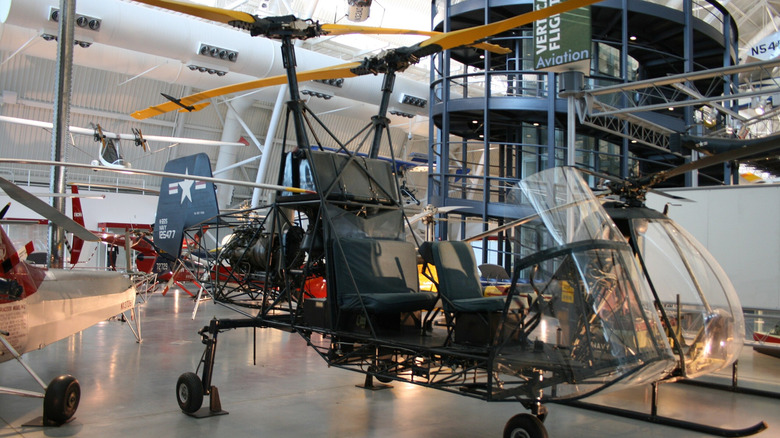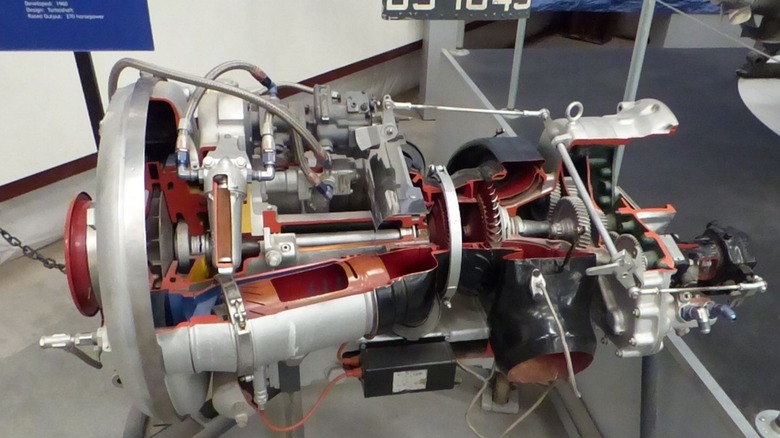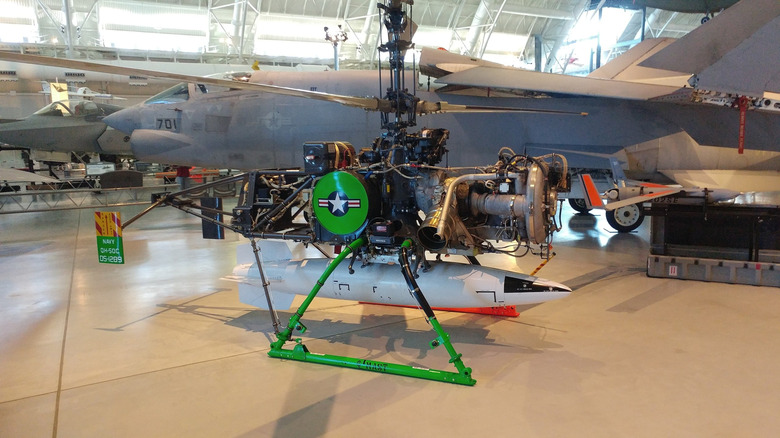Which Helicopter Did The Boeing T50 Engine Power?
It's no secret that Boeing has long held its position among the top manufacturers in the aviation industry. From military aircraft to domestic jetliners that have dominated the sky for decades, Boeing has seemingly done it all. True, the manufacturer's reputation has taken hit after hit following the string of unfortunate events tied to many of its crafts, such as the rapid depressurization of its 737 MAX aircraft.
However, it has also been lauded for many of its creations, such as its impressively long-range 777 jetliners. As a company that's over a century old, Boeing has also been heavily involved in producing aircraft parts. Among these is the Boeing T50-BO-8A (502-10VC) turboshaft engine, or simply the Boeing T50, which powered the Kaman K-225 and Gyrodyne QH-50C (DSN-3) drone helicopters.
Boeing debuted the T50 in the mid-20th century with the Model 500 variant of the engine, which was a turbojet. After a few improvements, Boeing released the second variant, the Model 502 turboprop engine, which would later be converted into the T50 turboshaft found in the aforementioned Kaman helicopter.
But can it fit in a 1982 Porsche 928?
The T50 was an interesting engine that struck the perfect balance between power output and weight. Sure, its 300 horsepower at 28,380 revolutions per minute might not sound so enticing, especially when you pit it to some of the beasts that exist today, such as the long-awaited and equally powerful GE9X turbofan.
However, when you consider that it only weighs 334 pounds, thanks to the materials used in its build, such as aluminum and rubber, things start to make sense. To put things in comparison, the GE9X comes in at a hefty 22,000 pounds. In terms of measurements, the engine measured 40 inches in length and 24 inches in diameter, making it considerably manageable in size.
So manageable was the T50 that enthusiasts have been able to fit it into a 1982 Porsche 928. The rest of the engine's specifications included two combustion chambers and a single-stage centrifugal compressor, which Boeing paired with a single-stage axial turbine.
Creating milestones for gas turbine technology
The introduction of the T50 and subsequent continuous improvements marked significant milestones for gas turbine technology. When the Model 502 variant of the engine was fitted onto the Kaman K-225, it granted the helicopter the title of the world's first gas turbine-powered helicopter.
An improved variant of the engine, the Model 502-10VC, which would be fitted into the Gyrodyne QH-50C (DSN-3) drone helicopter more than a decade later, would be lauded as the U.S.'s first 150-hour approved turbine engine with between 200 and 300 shaft horsepower. The Kaman K-225, by Kaman Helicopter Company, was only available between 1949 and 1951. The helicopter featured an intermeshing twin-rotor setup and was a two-seater with tricycle landing gear.
As you would expect, one of its most striking features was the T50, which enabled the K-225 to pave the way for Kaman's HOK military helicopters. On the other hand, the Gyrodyne QH-50C (DSN-3), a drone anti-submarine helicopter, was among the first unmanned aerial vehicles ever created and the first drone to enter service. The aircraft could carry a range of weapons, from rocket and gun systems to a Mark 57 nuclear depth bomb. Of course, the Boeing T50 enabled it to reach all its targets.


